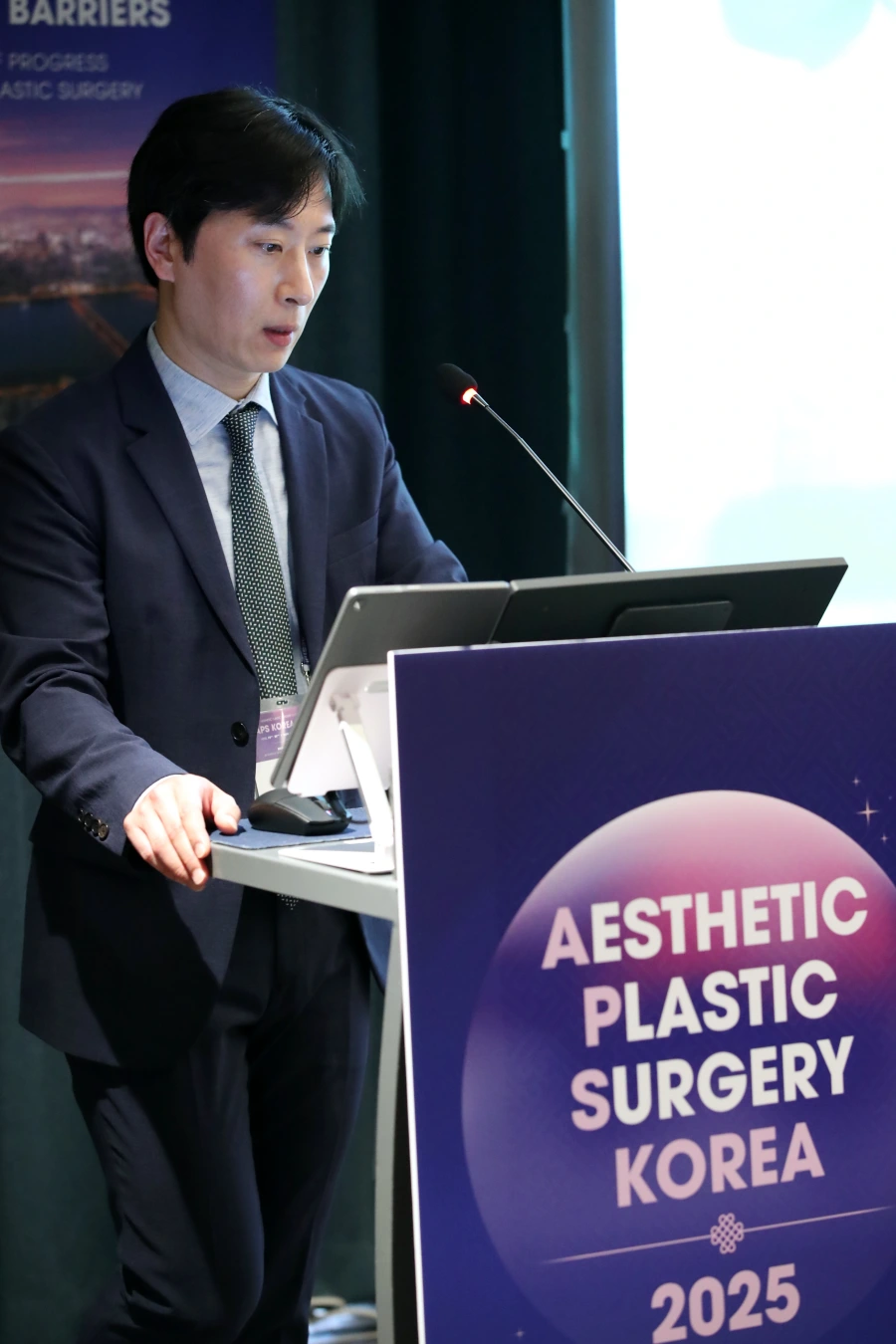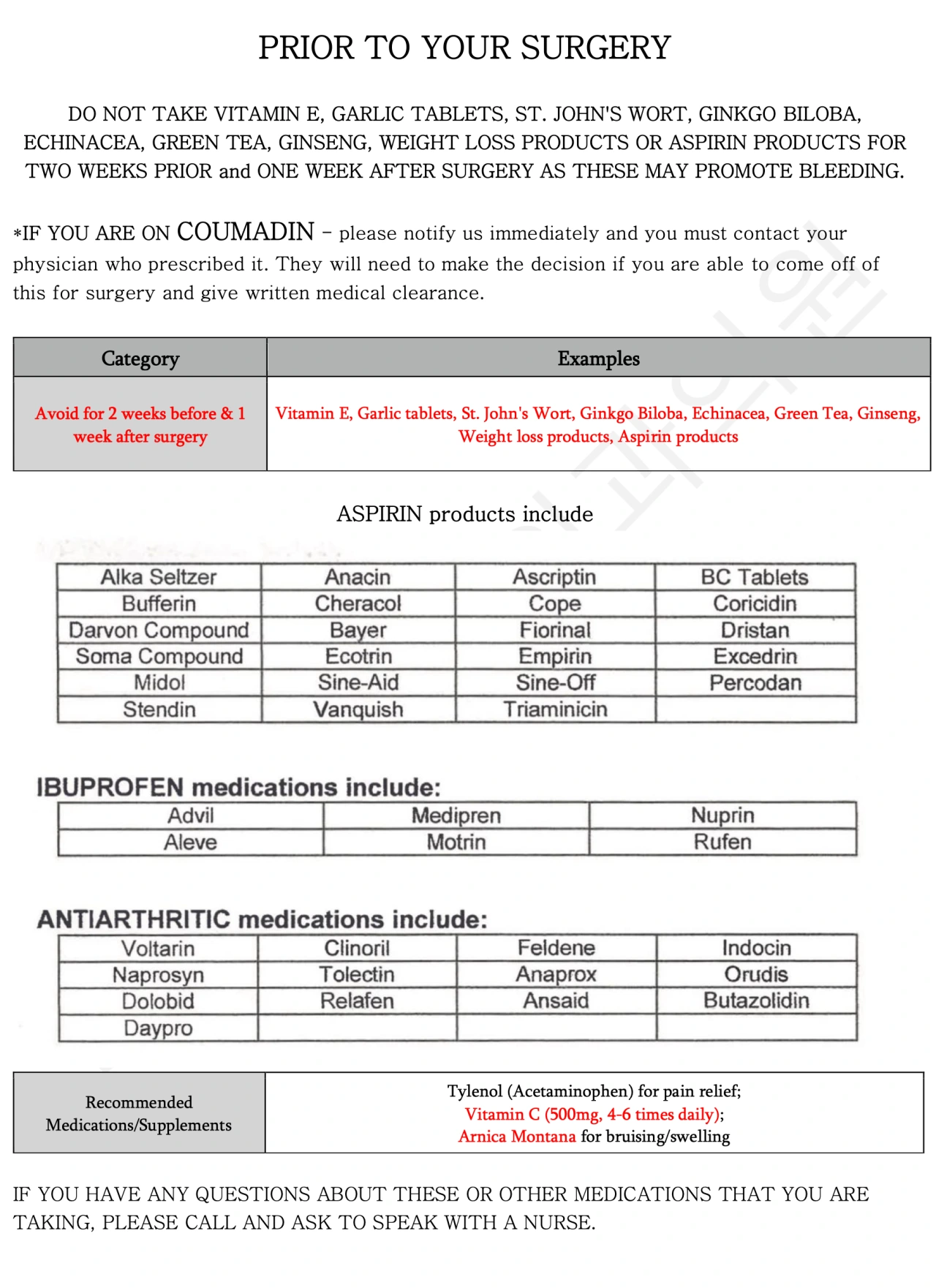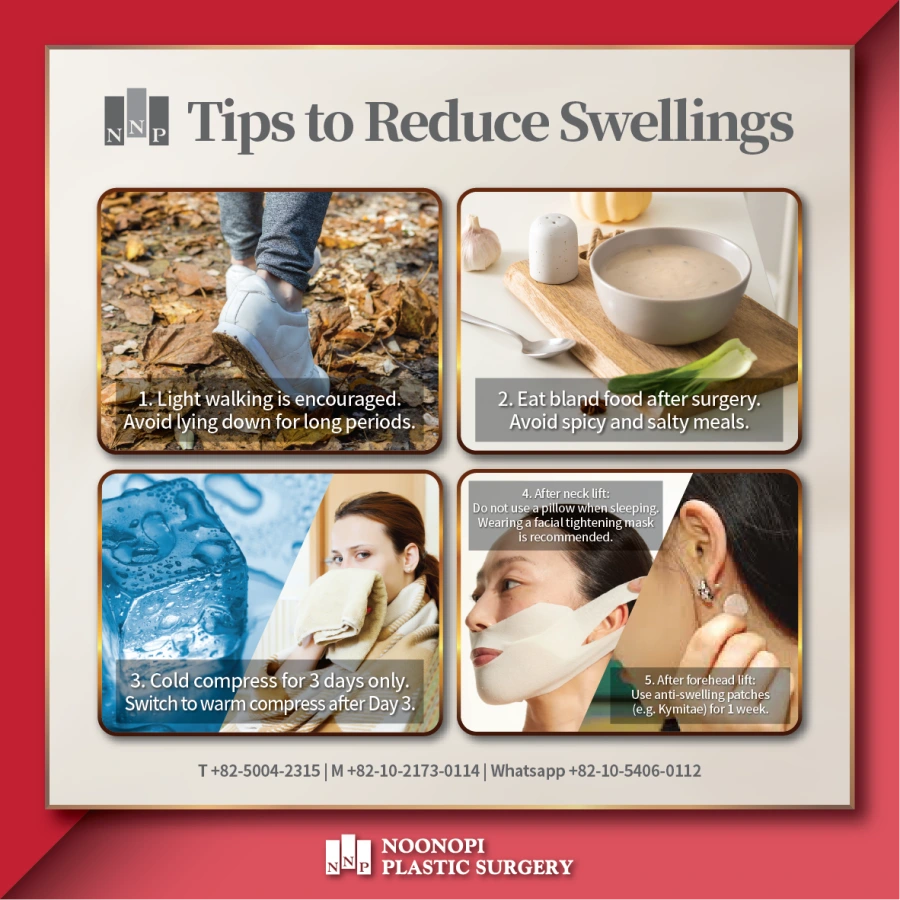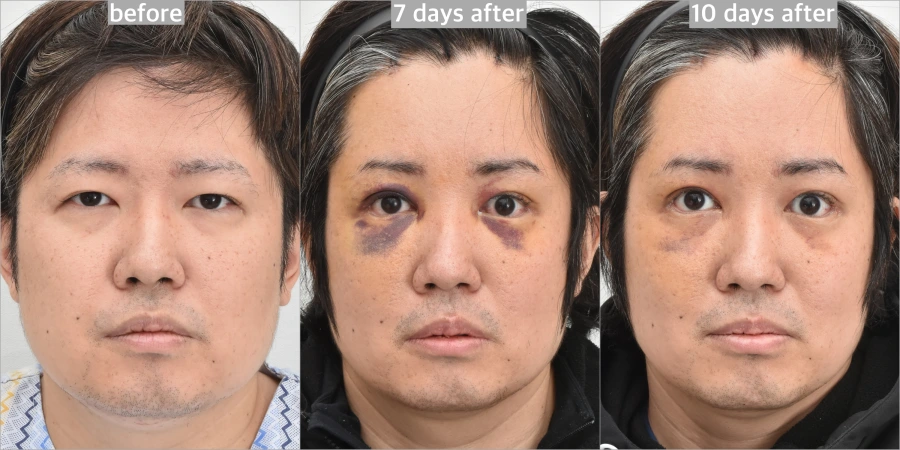7 Tips Before Plastic Surgery in Korea: Recovery Times and Precautions
2025-05-03
Preoperative Planning and Precautions
The importance of preoperative planning cannot be overstated in the context of plastic surgery. It necessitates a comprehensive evaluation of the patient’s medical history, in-depth consultations, and appropriate health preparations to maximize safety and achieve the best possible results. Noonopi Clinic specializing facial rejuvenation in Korean plastic surgery place great emphasis on customized care by adapting each procedure to align with the unique aesthetic aspirations of their patients, thereby enhancing outcomes while simultaneously mitigating potential risks.
For an optimal surgical experience and recovery process, patients must consider several aspects including choosing a suitable time for undergoing surgery, stopping particular medications as advised, and implementing recommended lifestyle changes prior to the procedure. Such steps are crucial in fostering an efficient healing period post-surgery and lessening chances for complications to arise. Typically, clinics provide detailed instructions before operations that serve as guidelines for patients during this essential preparatory stage.
Consultation with Licensed Surgeons

Having a consultation with a qualified and seasoned plastic surgeon is an essential first move. In this meeting, it’s important for patients to candidly share their aspirations, anticipated outcomes, and any apprehensions they may have. Engaging in such conversation aids in grasping the possible complications as well as advantages of the surgery, which contributes to the patient being knowledgeable and assured.
The expertise of a skilled surgeon is pivotal in realizing a person’s intended results from surgery while also reducing potential risks. This significantly impacts the overall success of the procedure.
Health Preparations
Before embarking on a plastic surgery procedure, it’s crucial for patients to properly prepare their health. This includes stopping smoking several weeks in advance of the surgery to diminish the risk of complications and enhance healing. Certain medications and supplements—including oral contraceptives and aspirin—should be stopped according to the surgeon’s advice so as not to disrupt the surgical process.
Taking these measures is essential for ensuring that patients’ bodies are in prime condition for both undergoing the operation and facilitating a smooth recovery afterward.
Scheduling and Timing
Choosing the right time for surgery is crucial for a smooth recovery. Patients should consider their personal schedules, lifestyle factors, and menstrual cycles to minimize complications and enhance healing. Scheduling surgeries around these factors allows for adequate rest and reduces the risk of adverse effects.
Clinics often provide guidance on the best timing for surgeries to ensure optimal outcomes.
7 Tips for Planning Plastic Surgery

Below numbers = days
| Washing face | Shower, shampooing | Walking, Light activities | Return to work, Makeup | Contact lens, Light exercise | Moderate exercise, Social meeting | Look good in a photo, Seen at an important event | |
|---|---|---|---|---|---|---|---|
Non-incisional double eyelid surgery, Aesthetic canthoplasty, Thread lift | 1 | 1 | 1 | 3~5 | 5~7 | 7 | 10~15 |
Incisional double eyelid surgery, Ptosis correction, Upper blepharoplasty, Lower blepharoplasty, Infrabrow excision | 1~3 | 1~3 | 1~2 | 7~10 | 15 | 20 | 30 |
| Lower blepharoplasty (conjunctiva incision) | 1 | 1 | 1~2 | 3 | 15 | 15 | 20 |
| Rhinoplasty (open) | 2~3 | 3~5 | 1~2 | 7~10 | 15 | 20 | 30 |
| Forehead lift | 0~1 | 3 | 1~2 | 5~10 | 3 | 15 | 30 |
| Facelift | 2~3 | 3~5 | 2~3 | 20 | 15 | 30 | 45~60 |
| Facial bone contour, Orthognathic | 2~3 | 3~5 | 2~3 | 20 | 20 | 30 | 45~60 |
1. Avoid the menstrual cycle
Achieving hemostasis can be challenging during menstruation, and the bleeding tendency increases due to hormonal changes. It is therefore advisable to avoid scheduling surgery during this period.
2. List of medications that should stop

Aspirin, Ibuprofen, Naproxen, Nonsteroidal anti-inflammatory drugs, Plavix, Plavitol, Warfarin:
These drugs may affect hemostasis and increase the risk of bleeding. Your primary physician will usually emphasize discontinuing these medications before surgery. The time you need to stop taking them varies (1-7 days), and your doctor will tell you the exact period. You can usually start retaking these drugs three days after surgery. Still, you can take acetaminophen for any discomfort until the procedure.Vitamin E:
This may affect the blood-clotting function and should be stopped two weeks before surgery.Ginkgo biloba preparations (Tanaka tablets, Tanamin tablets, Ginexin F tablets):
These can increase blood circulation and affect hemostasis, so stop taking them 36 hours before surgery.Herbal medicines, glucosamine, and health supplements:
The ingredients of some of these drugs may be unclear and may affect hemostasis or anesthesia. It is therefore recommended to stop taking them 1-2 weeks before surgery.Oral contraceptives:
These should be stopped four weeks before surgery and restarted two weeks after.
3. Quit smoking

Smoking can hinder hemostasis and constrict small blood vessels that feed the skin. It is wise to stop smoking at least four weeks before a facelift or rhinoplasty and at least two weeks before eyelid surgery.
4. InMode®, Ultherapy®, Thermage®
There has been an increasing demand for InMode®, Ultherapy®, and Thermage®. By targeting subcutaneous fat, these procedures can damage both subdermal and lymphatic vessels. Therefore, patients who underwent “skin shrinking” facial treatments have a higher risk of skin sloughing and healing-related problems following a facelift. It is advisable to stop these treatments at least 12 months before facelift surgery.
5. Comfortable clothing
We recommend wearing pants with elastic waistbands that are easy to take off. It’s also better to wear clothes with buttons instead of pullovers or T-shirts to protect your face.
6. Remove accessories

Before entering the operating room, removing all metal accessories such as earrings, necklaces, rings, piercings, and dentures is necessary. These items can interfere with the use of electric surgical equipment and may pose a risk of burning during surgery. If you have a pacemaker, it is important to inform the surgical team before the procedure.
7. And so on
After surgery, it is recommended to bring a hat, sunglasses, and a mask to conceal your appearance. The hat should be of a suitable size to reduce pressure on your head. Some post-operative care may limit washing or shampooing for a while, so taking a shower before visiting the plastic surgery clinic can help you feel clean and refreshed. It is advised to avoid sun tanning or sunburn for two weeks before the surgery. If you have had your hair colored, permed, or treated chemically, it is best to wait until two weeks after the surgery to do so. Male patients must let their beards grow for two days before the surgery. This advice helps in planning incisions and ensuring they are parallel to the hair follicles in the case of facelift surgery.
Post-operative care and the recovery period are integral to the plastic surgery process. The length of recovery is contingent on the specific procedure undergone, yet adhering strictly to post-op instructions from the surgeon promotes an uneventful recuperation. Patients must anticipate typical symptoms such as swelling and discoloration, which may persist for a varying duration ranging from several days up to multiple weeks. It’s imperative that patients follow their aftercare regimen rigorously, including taking prescribed medication and steering clear of heavy physical exertion, in order to facilitate successful healing.
Ensuring sufficient downtime for convalescence is crucial. Prematurely resuming normal activities can disrupt the body’s healing mechanism. Check-up visits play a pivotal role in tracking rehabilitation milestones and providing opportunities to address any emerging issues during recovery. These sessions validate that recuperation adheres to expected timelines and affords prompt corrective measures if complications occur.
Swelling and Bruising Management
Patients often worry about controlling swelling and bruising following surgery. Properly handling these issues is vital for treatment efficacy, enhancing patient comfort, and facilitating healing in all aspects of life.
Compression Therapy: Cool vs. Warm
Immediately after surgery, applying cool compresses to the surgical area can help constrict blood vessels and reduce bleeding. Once the initial period has passed, warm compresses can relieve bruising and swelling by promoting blood flow. For the first three days after surgery, use cool (but not icy cold or ice) compresses, then switch to warm compresses afterward. Following these guidelines can help you return to your daily routine more quickly.

How to Reduce Swelling On Your Own
Swelling is a normal part of the healing process after surgery and typically peaks on the second to the third day. This event occurs when blood vessels expand and plasma components leak out during the healing process. To promote faster recovery, it’s crucial to maintain good blood circulation. Here are some tips for reducing swelling in the early stages of recovery by yourself:
1) Sleep late and wake up early: For the first two or three days.
Sleeping late and waking up early can help reduce swelling, as spending less time lying down will result in less blood flowing to your face. Avoid taking naps for the first 2 to 3 days after surgery, and maintain an upright posture throughout the day.
2) Eat fresh food
It’s essential to eat a bland diet after surgery. Salt causes the body to retain water, which can contribute to swelling. Avoiding spicy or salty foods for at least a week after surgery is recommended. Also, do not take late-night meals.
3) Light jogging: Start from the first to third day
Exercise is an effective way to promote blood circulation and reduce swelling. If you’ve had blepharoplasty, you can start jogging the next day. In patients with rhinoplasty, facelift, or facial bone contouring surgery, three days after the procedure is a good time to start light exercise. The effort should be until you feel warm but not sweaty. Still, outdoor activities in cold weather can cause blood vessels to constrict. So, walking in a warm indoor space like a shopping mall is wise in winter.
4) Avoid activities that increase the pressure
Blowing your nose or straining your abdomen during the early recovery can result in latent bleeding due to increased blood pressure. Especially in lower blepharoplasty or rhinoplasty patients, this behavior should be strictly prohibited.
5) Use a high pillow while sleeping
Keeping your head elevated during sleep can help reduce facial swelling. However, for neck lift patients, using a pillow should be avoided. Please consult your surgeon for more specific instructions.
6) No smoking
Smoking can reduce blood circulation by constricting the vessels, so it is advisable to stop smoking for at least four weeks after surgery. This will help the swelling improve as blood circulation returns.
7) Drugs for facial swelling
Several medications on the market are said to help reduce swelling; most are OTC. But honestly, those were less effective than the earlier tips I described above.
Bruising Reduction Tips
1) Cool pack and warm compression
Apply cool compresses in the initial recovery period to prevent the bruise from becoming wider and to reduce swelling. After three days, switch to warm compresses to help the discoloration fade more quickly by increasing blood flow to the bruised area. Avoid placing compresses directly on the incision site and limit each session to 30 minutes, with 30 minutes of rest in between.
2) Low-level laser therapy (LLLT)
Many clinics use a laser device, commonly known as LED therapy, to improve swelling or bruising. This treatment can be done immediately after surgery. The mechanism behind LLLT is that cells absorb specific light and produce more energy (ATP) to increase circulation and remove waste products.
3) Skin moisturizing
It is essential to hydrate the bruised area and moisturize your skin. Instead of recommending a specific product, we suggest using one of the creams you usually use.
4) Bruise relief cream
Various creams are available to help reduce bruising, but their efficacy is questionable and lacks scientific evidence.
Some common ingredients include:
Vitamin K ointment:
Vitamin K works by inhibiting hemosiderin, which is the cause of bruising. Products with less than 1% vitamin K content may not be effective.
Heparin-containing (heparinoid) ointment:
Heparin is an ingredient that prevents blood clotting. Noscana®, a commonly known scar cream, has a high heparin content and may help absorb bruises quickly, but further research is needed.
Noonopi Plastic Surgery also offers treatment for bruise after plastic surgery, which are most effective among other treatments.

5) Hyperbaric Oxygen Therapy for Bruising and Swelling After Plastic Surgery
After plastic surgery, many patients experience bruising and swelling that can delay recovery and affect final results. Hyperbaric Oxygen Therapy (HBOT) is a medically proven treatment that speeds up healing by delivering near 100% oxygen at higher-than-atmospheric pressure. This enhanced oxygen supply helps reduce post-surgical inflammation and bruising, promotes new blood vessel growth, and accelerates skin regeneration. At Noonopi Plastic Surgery in Korea, HBOT is frequently recommended after procedures like facelift, fat grafting, and blepharoplasty to minimize downtime and improve healing outcomes. For patients seeking faster recovery after cosmetic surgery in Korea, HBOT can be a powerful addition to the aftercare process.
Frequently Asked Questions
What makes South Korea a popular destination for plastic surgery?
South Korea’s reputation for high standards, innovative techniques, and skilled plastic surgeons makes it a sought-after destination for plastic surgery. In recent years, facial rejuvenation procedures such as facelift, neck lift and endoscopic forehead lift have been a rise in popularity, reflecting the growing trends in anti-aging surgery. The combination of advanced procedures and personalized care ensures exceptional results, drawing international patients.
How do I choose the right plastic surgery clinic in Korea?
Choosing the right plastic surgery clinic in Korea requires careful consideration of individual preferences and desires, alongside prioritizing the surgeon’s experience, detailed procedure explanations, and aftercare services. Additionally, reading testimonials and viewing before-and-after photos will offer valuable insights into the clinic’s quality.
What are the most popular plastic surgery procedures in Korea?
The most popular plastic surgery procedures in Korea include double eyelid surgery all of which are sought after for their ability to enhance facial features while ensuring a natural look. Upper blepharoplasty for aging eyelids are also a popular procedure in Korea.
What should I expect during the recovery period after plastic surgery?
During the recovery period after plastic surgery, you should expect swelling and bruising, and it is crucial to follow post-operative care instructions, attend follow-up appointments, and avoid strenuous activities to achieve the desired surgery results for optimal recovery.


